It looks like you've stumbled upon a page meant to be read by our code instead of viewed directly. You're probably looking for this page.
Book of the Day Roundup, September 28-October 2

Jerusalem as a Second Language
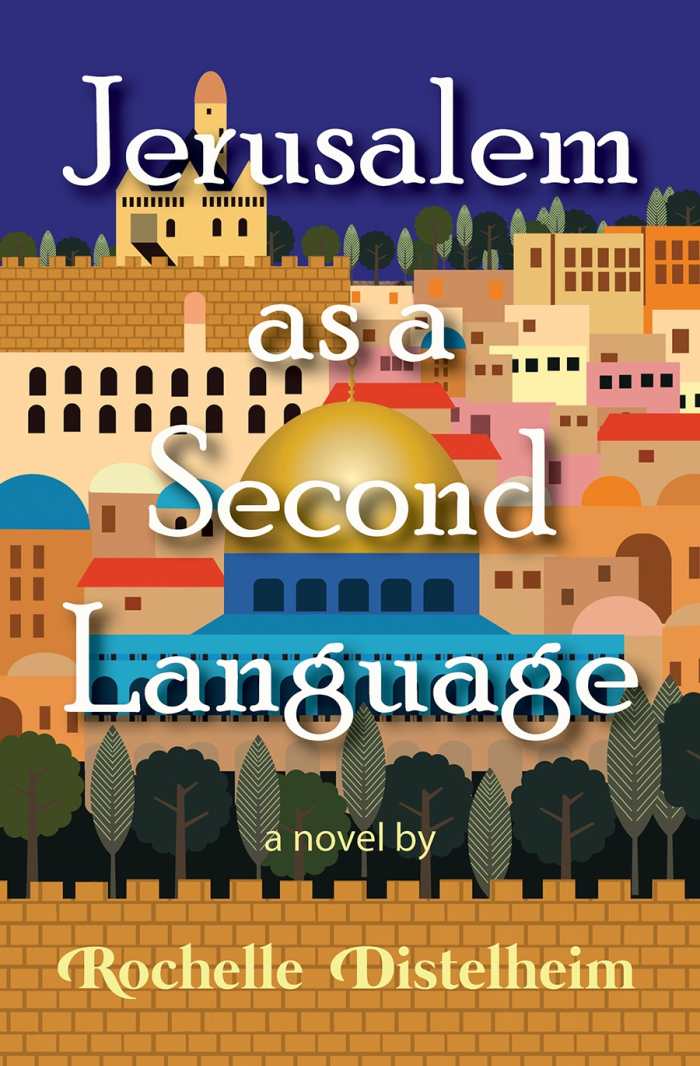
Rochelle Distelheim
Aubade Publishing
Softcover $19.95 (292pp)
978-1-951547-06-6
Buy: Local Bookstore (Bookshop), Amazon
In Rochelle Distelheim’s absorbing novel Jerusalem as a Second Language, a family makes aliyah, considers assimilation, and tests its own bonds.
The Zalinikovs—Manya, Yuri, and their daughter, Galina—survived the Soviet Union, only to find themselves in new peril in its wake. They leave for Israel, hoping to lead a noncircumscribed Jewish life. But in Jerusalem, Yuri and Manya’s marriage, always a refuge in St. Petersburg, is tested by his desire to embrace their long-shelved religious practices, and by her insistence on staying Russian and secular.
Into the family’s circle enter a rich cast of sabras and fellow olim, including a rabbi with exalted personal aspirations and Asher, whose love may spare Galina from the IDF. All struggle, in some way, with what it means to be Jewish and Israeli, and with how to welcome those who are different.
The novel’s women are tough and subversive, pushing those around them toward more nuanced approaches to religion and life. In this involving mix, Manya takes the lead. She’s reluctant to note the beauty of the sunrise over the Hebron Hills; she hungers for the music and rhythms of Russia. But to please Yuri, she attends synagogue for the first time and avoids treyf foods. Just as she’s settling in, an almost critical error, and an act of violence, change her world once again.
Distelheim is variously incisive, funny, and poetic in approaching questions of religious practice and resistance. Her heroine, forced to learn Hebrew, remarks that it “fell from my lips more hiss than song” and regards religion as other: “somebody’s personal translation of the meaning of the universe wrapped up in fancy language [and] repeated numerous times with conviction.” But love, and faith in her relationships, compel Manya, and the novel, forward, making Jerusalem as a Second Language a sensitive novel about how religiosity is adapted in liminal spaces.
MICHELLE ANNE SCHINGLER (June 27, 2020)
Polar Tales
The Future of Ice, Life, and the Arctic
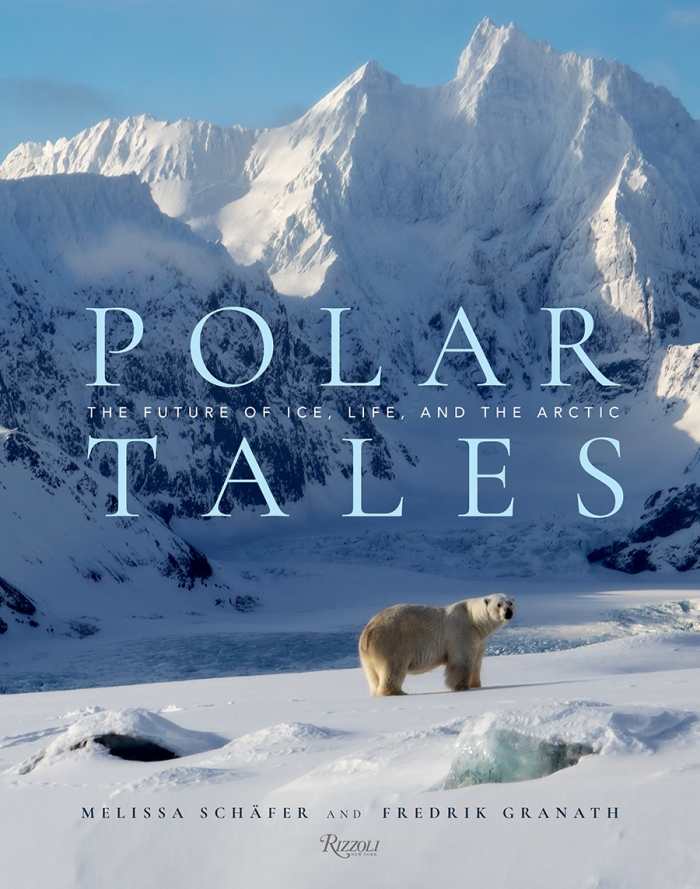
Fredrik Granath
Melissa Schäfer
Rizzoli
Hardcover $50.00 (272pp)
978-0-8478-6884-1
Buy: Local Bookstore (Bookshop), Amazon
Fredrik Granath and Melissa Schäfer spend months each year documenting wildlife in Norway’s Svalbard region, a “ground zero of global warming” Arctic environment that they characterize as the “roughest and toughest,” but also “the most fragile place you could imagine.” Through Polar Tales, their observations and astonishing color photographs record images of the endangered landscape.
Powerful visual stories portray an environment on the brink of collapse, where melting ice shrinks animals’ habitats, and food and shelter are vanishing. Polar bears, on top of the Arctic food chain, are the most visible symbols of climate change. Granath and Schäfer’s magnificent bear portraits capture bears being playful, tender, and terrifying. Gut-wrenching shots show a newborn seal’s brutal, short life; because there’s no shelter left on its ice patch, after a few hours it is eaten by a bear, itself stressed and starving.
Schäfer’s photographs display an amazing and vibrant landscape: countless shades of blue are frozen in ribbons of ice formations; every hue of white and yellow shimmers in polar bears’ fur against the snow. Most images are gorgeous, but there are also realistic wildlife portraits complete with blood-soaked snow. The showstopper is a rare, ethereal image of a bear den, shot hours after it was abandoned by a ravenous mother bear and her cubs after months of nesting.
The coda reveals Granath and Schäfer’s personal experiences and shots of their bathroom-sized hunting shack, where they take turns sleeping while the other stokes the furnace and guards against bears. Despite the hardships, they cherish their time in Svalbard, describing how time slows down and “we are always present.”
Polar Tales is an eloquent portrayal of a unique place that calls for swift action on climate change—to save Svalbard and its bears, and to keep winter from “fading from our planet.”
RACHEL JAGARESKI (August 27, 2020)
The Cat I Never Named
A True Story of Love, War, and Survival
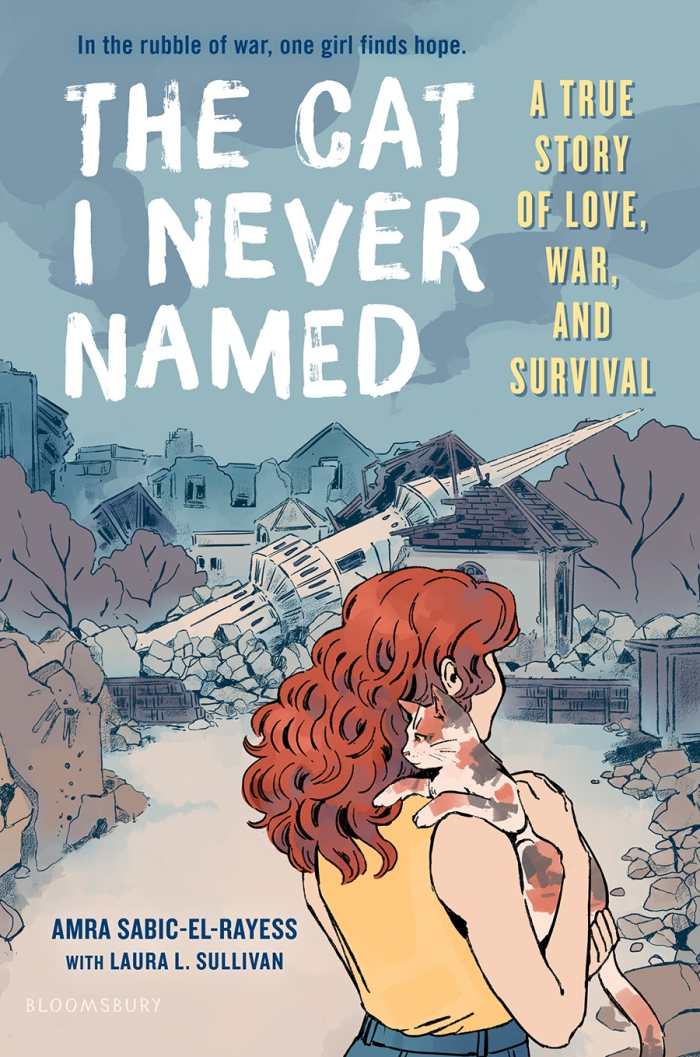
Amra Sabic-El-Rayess
Laura L. Sullivan, contributor
Bloomsbury
Hardcover $19.99 (352pp)
978-1-5476-0453-1
Buy: Local Bookstore (Bookshop), Amazon
Amra Sabic-El-Rayess’s account of her youth during the Bosnian War is a timely personal testimony on the strictures of survival. Gripping and achingly humane, The Cat I Never Named captures what it means to face an ideological tide bent on your personal eradication.
Amra and her family “are Muslims of birth, of ethnicity, not religion, really.” Amra is also a devoted and gifted student, not just at the top of her class, but in the top tier of her country. But then war springs—not “all at once. Instead, like a cat, it stalked” in, and Amra didn’t “believe it was there until it pounced.” She’s betrayed when her Serbian teachers destroy her records before fleeing ahead of invading Serbian forces. It’s then that Amra realizes, “Only one kind of test matters now. The test of survival.”
Amra does survive, both ethnic cleansing and “more than 1,100 days under the Serb’s military siege.” Nonetheless, Amra’s war is shaped by the destruction of dreams, both physical and metaphorical. Her parents’ dream home decays; her childhood, then her future, are swallowed by human darkness. What lingers is Maci—“cat” in Bosnian. This feline refugee adopts Amra’s family even though a cat isn’t something they “need.” Maci is a narrative anchor and a constant reminder that, even during times of horror, life contains inexplicable softness—elements that are gentle, protective, and loving.
The Cat I Never Named is immersive, and Sabic-El-Rayess’s visual imagination is a slipstream. Amra’s words have a subtle, relentless force, creating a world where life is a danger, a demand, and a warm, calico presence. In the face of violence, death, and creeping despair, Amra and her family find ways to keep their bodies and spirits together.
LETITIA MONTGOMERY-RODGERS (August 27, 2020)
That Time of Year
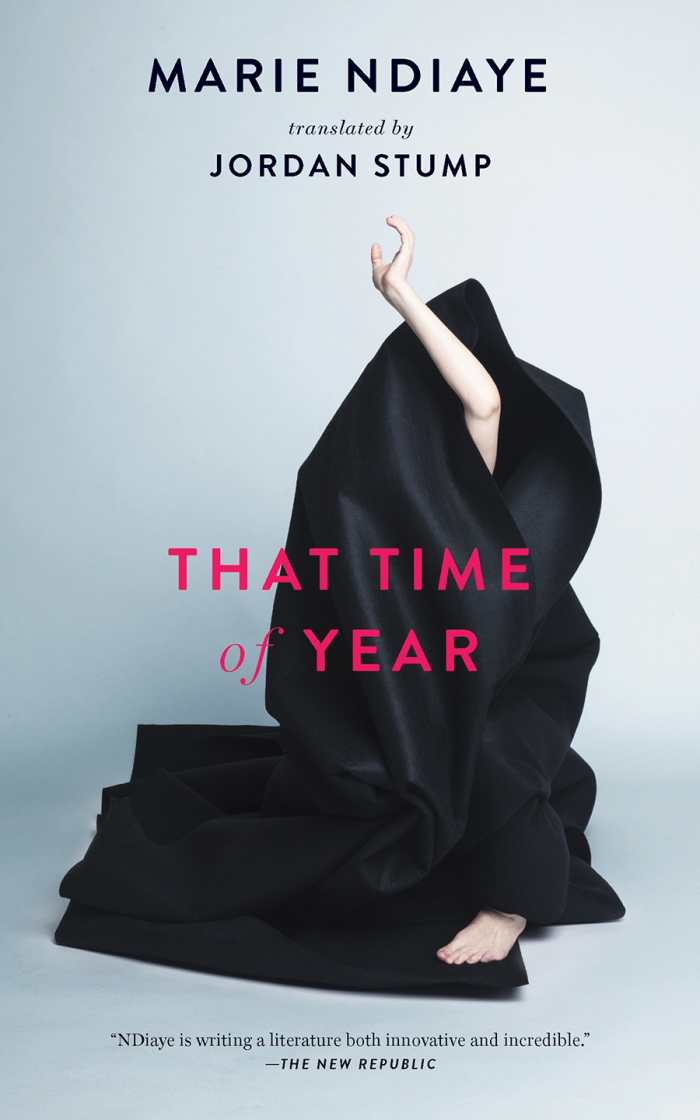
Marie NDiaye
Jordan Stump, translator
Two Lines Press
Hardcover $19.95 (128pp)
978-1-931883-91-7
Buy: Amazon
A family holiday takes a turn for the strange and tragic in Marie NDiaye’s novel That Time of Year.
On the last day of their summer vacation, Herman’s wife and son go missing. His only chance of finding them, according to his sole ally in the village they’re staying in, is to blend in with the villagers. Herman does his best, but answers are slow to come. By the time they reach his ear, it is far too late to alter his or his family’s fate.
There is something uncanny about the village where Herman has summered the past ten years but never, before now, remained past August. The Stepford-like locals are always friendly but have no apparent interest in finding their missing visitors. The village itself, a pure idyll during the summer, transforms into a gloomy, rain-sheathed world unto itself as soon as the clock ticks over to September.
Even Herman himself, despite his situation, expresses more concern about the weather than for his family’s safety. He stands helpless and alone before the village’s strict bureaucracy and stricter pressure to conform to their incurious ways. At first, everything makes him uncomfortable, his outsider status relegating him to the fringes of society despite his self-perceived superiority. But it doesn’t take long for this new way of existing to lock him in its grasp, to the point where the idea of leaving fills him with dread. Even the reappearance of his wife and son cannot undo the changes brought about by their disappearance.
Herman’s story is compelling, inevitable, and, much like the village, easy to get lost in. That Time of Year is a hypnotic novel about the spell cast by a village on its inhabitants, willing and otherwise.
EILEEN GONZALEZ (August 27, 2020)
To Know You’re Alive
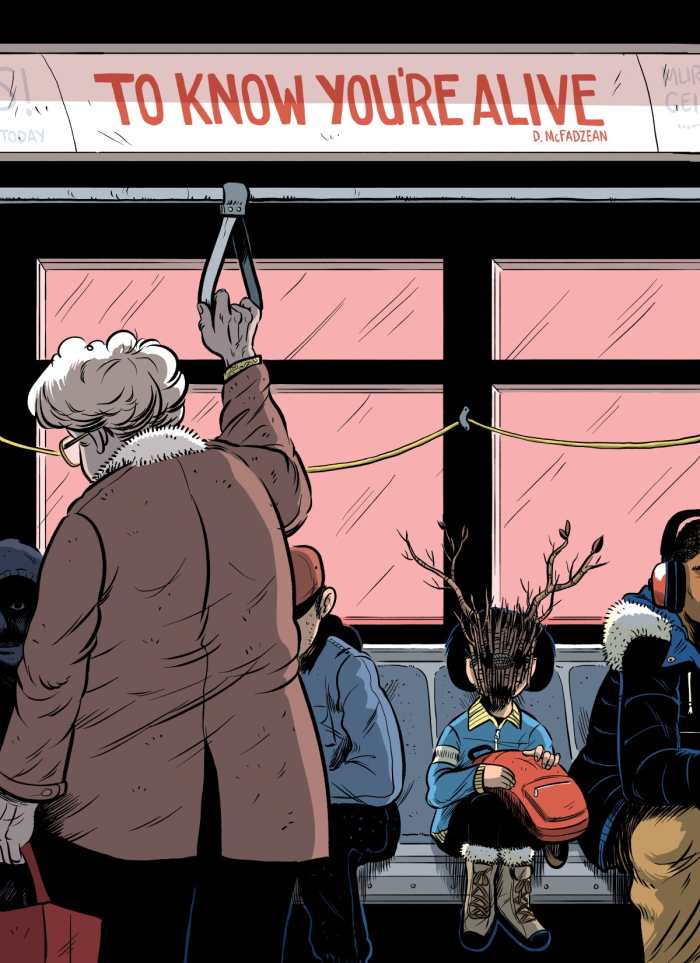
Dakota McFadzean
Conundrum Press
Softcover $20.00 (160pp)
978-1-77262-049-8
Buy: Local Bookstore (Bookshop), Amazon
Dakota McFadzean’s story collection To Know You’re Alive is deliberate, creepy, and wonderful.
These stories might be called haunting or disturbing, but that loose description doesn’t do justice to their subtle and graceful complexity. The first story profiles a man remembering his time as a young boy with the gnoshlox, creatures that came alive from the clay in his sandbox. As with a later story, “Hollow in the Hollows,” contemplative pacing indicates that something more than a simple scare is happening; both stories carry an implicit commentary on the dangerous power of childhood imagination.
Other stories feature kids exploring an old house, growing more misshapen as they do; a girl terrorized by a breakfast cereal mascot; and a stay-at-home dad narrating a strange experience while watching Mister Rogers with his son. Humor and terror sometimes share space in the same sentence: “There was something moving around the darkened set of Mister Rogers’ house.”
The writing is brilliant and imaginative, providing just a nudge in one direction or another that leaves the reader to fill in the blanks. It’s engaging, mysterious, and satisfying. The characterizations of children are noteworthy, with small details that speak volumes—a girl’s excitement over a Scholastic Book order in “Buzzy,” or her tortured, lonely classmate’s bitter response: “That book is for idiots.”
The masterful art shifts styles from one story to the next to suit the mood, or sometimes to ironically oppose it. One half of an equal partnership, the images convey as much plot and characterization as does the text. To Know You’re Alive is a thoughtful, chilling peek into the darkest corners of life.
PETER DABBENE (August 27, 2020)
Barbara Hodge